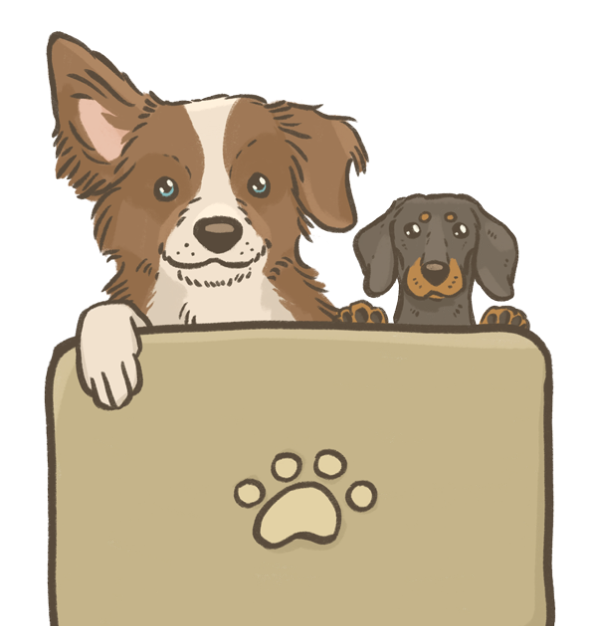Holistic Approaches to Calming Dog Anxiety and Stress

Anxiety is an ever-increasing problem in domestic pets, and especially in dogs. It’s often not noticed, or ignored because people don’t recognise or realise how important small early signs of anxiety are.
In younger dogs, any signs of fear, anxiety, or reactivity need to be taken incredibly seriously, and acted on. The sooner you take steps to heal anxiety, the less likely it will become a severe problem. You need to understand that anxiety tends to get worse over time - and mild anxiety symptoms can sometimes suddenly explode into severe symptoms.

There are four major expressions of anxiety - fight (reactive, aggressive, lunging at the scary thing, trying to make the scary thing go away), flight (running away, hiding, trying to escape the scary thing), freeze (from shutting down partially through to a complete freeze), and fidget (these ones go crazy, out of control, jumping all over everybody, not able to respond to commands).
So - If you see any signs of anxiety, no matter how small, any kind of distress – including:
- Vocalisation
- Over-excitement
- Poor ability to learn
- Pacing
- Panting
- Aggression
- Reactivity
- Destructive behaviour
- Resource guarding
- Lunging at other dogs on lead
- Sound sensitivity
- and especially any lack of ability to self-calm after being triggered
Your pup needs help! And they need help sooner rather than later.
Defining anxiety - what it is, how it’s caused, what is happening physically, mentally, and emotionally
Anxiety affects dogs physically/physiologically, and mentally/emotionally. There are two important things going on inside any anxious/triggered dog. A state of fear -mental/emotional distress, and physiological arousal.
They feel in danger, that they are threatened. They might decide that the sound of a sausage sizzling is literally a ‘tiger’ - something terrifying and life-threatening.
Their body goes into fight/flight mode, with release of high levels of adrenaline, and increased heart rate - and as arousal levels increase, your dog’s forebrain, their ability to learn, understand, and respond to your communication, is lost.When they cross the ‘red line’, they can’t think or learn at all. They are in total panic mode.
Anxiety tends to reinforce itself - every anxiety-provoking event or episode makes the animal's mental patterns of worry and fear stronger, leading to stronger arousal, and worse anxiety symptoms overtime.
A simple way that I think of and explain anxiety is that your dog has lost the capacity to self-regulate into healthy relaxation. They are stuck in unhealthy arousal.
How relaxing touch teaches your dog to relax and build self-regulatory capacity
I’ve been using therapeutic touch to find and heal neck, back and soft-tissue pain for about 27 years (and it’s worth mentioning that undiagnosed pain is often a big factor in anxiety that needs to be checked for and fixed!) - then around 15 years ago I started noticing that certain qualities of therapeutic touch cause a strong, body-level relaxation response in dogs.
I discovered that when people use relaxing touch every day, and in the face of anxiety triggers, their animals often show beautiful reductions in anxiety symptoms. This happens in animals who may not have responded well to prescription medications and the more traditional anxiety treatment protocols of desensitisation and counter-conditioning with positive reinforcement training methods.
The magic of relaxing touch is that every time you use it with your animals, you are teaching and training their whole body/mind system how to self-regulate, how to move into a state of healthy relaxation. You are building their capacity to move themselves out of anxiety and into relaxation.
And overtime, when you use relaxing touch to move anxious animals into relaxation, especially in the face of triggers, your animals will often slowly learn that the ‘scary thing’ is actually nothing to worry about. This is because they experience relaxation with the relaxing touch at the same time they are experiencing the ‘scary thing’.
Using relaxing therapeutic touch in this way is a novel treatment for anxiety, but it’s one that I have found consistently very effective. What’s more, this kind of touch releases heaps of oxytocin (the relationship hormone) in your dogs, and in you, while you practice it. So, you get a beautiful side benefit of making your relationship with your dogs deeper, stronger, and more beautiful.
I can’t teach you all of this in this article. But I can give you some tips to get started. Firstly, contain your dog. Either hold them by the collar or pop a lead on. And then use the kinds of pats that your dog loves the most but slow down the hand-speed of your touch until you are moving very, very slowly.
Your dog might find this strange, or even a bit uncomfortable. For an anxious dog, to relax can feel unsafe at first. But if you gently persist, you see that your dog’s body shows relaxation signs - soft, heavy, blinky eyes, breath slowing and getting deeper, face and ears softening and relaxing, maybe a yawn or two. And if you do this for 5-10 minutes every day, you’ll likely see anxiety symptoms ease over time.
However -to help you most effectively, we would need to get together in person or on Zoom, where I can understand your dog’s unique situation, and also recommend supplements, training strategies, and tailor a holistic anxiety treatment plan that will give them the best possible outcomes. And of course, I’ll teach you more advanced relaxing touch skills at the same time. And how to use them in the face of triggers and challenges!
Some dogs will also need prescription medications to get the best results. And you need a vet to advise you on things like this. I never prescribe behavioural medications unless I feel they are truly necessary!
Relaxing touch is very helpful in treating in anxiety - and another strategy that can be super-helpful is to minimise high-arousal activities like ball play, and to focus on supporting as much calm, relaxed states of being as you can with your dogs.
If you want my help, pop into www.thehealingvet.com. I’d love to help!
About the Author - Dr Edward Bassingthwaighte.

Dr Edward Bassingthwaighte is a holistic veterinarian, and a world-leading expert in silent pain in pets. Dr Edward is passionate about fresh raw whole foods for dogs. He is the founder of the Whole Energy Body Balance method- a profoundly healing bodywork modality for pet parents and pet wellness professionals to relieve silent pain, anxiety and trauma in pets. Join Dr Edward's free masterclass on silent pain in pets here.
If you liked this article, sign up to our Big Dog Fam Mail to receive more great pet health and happiness advice.
